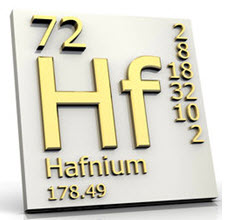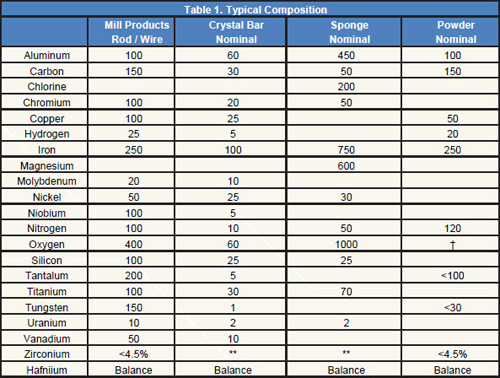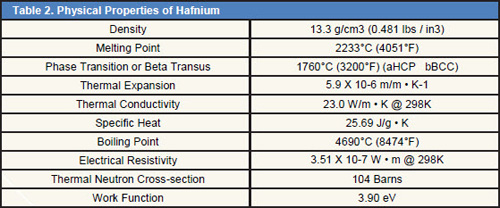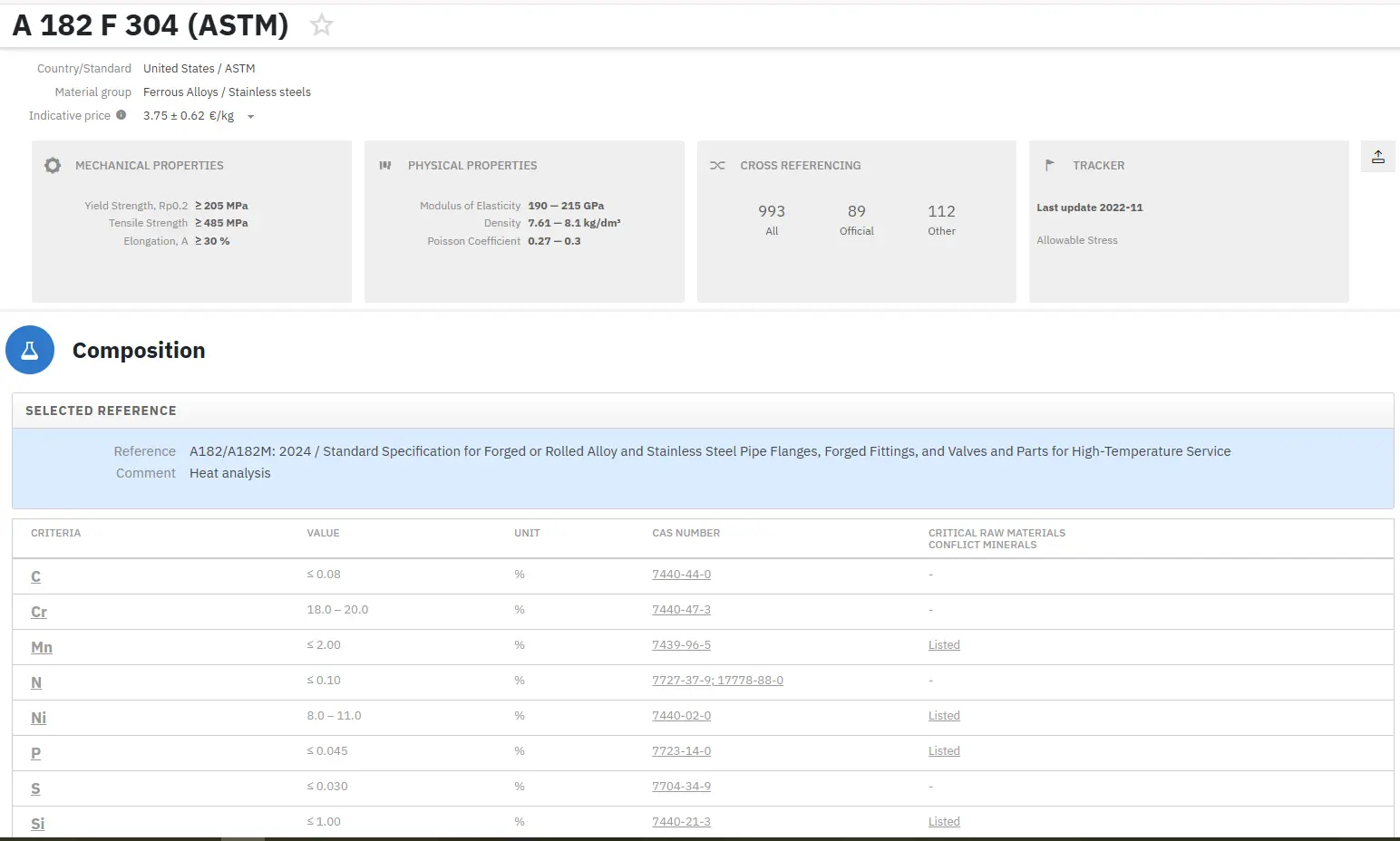Hafnium alloys: Part One
Abstract
Pure hafnium is a lustrous, silvery metal that is not so ductile nor so easily worked as zirconium The electric conductivity is about 6% that of copper. It has excellent resistance to a wide range of corrosive environments.
Hafnium is a heavy, steel-gray metal in the reactive metals group that is very closely related to zirconium, and forms a continuous solid-solution at all concentrations of zirconium and hafnium. Hafnium occurs naturally with zirconium at a ratio of approximately 1:50, and is produced exclusively as a co-product of nuclear-grade zirconium. Hafnium has an extremely high affinity for oxygen, nitrogen, and carbon, and is one of the most effective solid-solution strengtheners via dispersion strengthening. Like the other reactive metals, hafnium is HCP (Hexagonal Close-packed) at room temperature and anisotropic.

Pure hafnium is a lustrous, silvery metal that is not so ductile nor so easily worked as zirconium; nevertheless, hafnium can be hot- and cold-rolled on the same equipment and with similar techniques as those used for zirconium. All zirconium chemicals and alloys may contain some hafnium, and hafnium metal usually contains about 2% zirconium. The melting point, 2222°C, is higher than that of zirconium, and heat-resistant parts for special purposes have been made by compacting hafnium powder to a density of 98%. The metal has a close-packed hexagonal structure. The electric conductivity is about 6% that of copper and has excellent resistance to a wide range of corrosive environments.
Tables 1÷5 shows the common properties of Hafnium.





Leia mais
Encontre Composições Precisas de Materiais Instantaneamente!
Total Materia Horizon contém composições químicas de centenas de milhares de materiais e substâncias, bem como suas propriedades mecânicas e físicas e muito mais.

Obtenha uma conta de teste GRATUITA na Total Materia Horizon e junte-se a uma comunidade de mais de 500.000 usuários de mais de 120 países.